
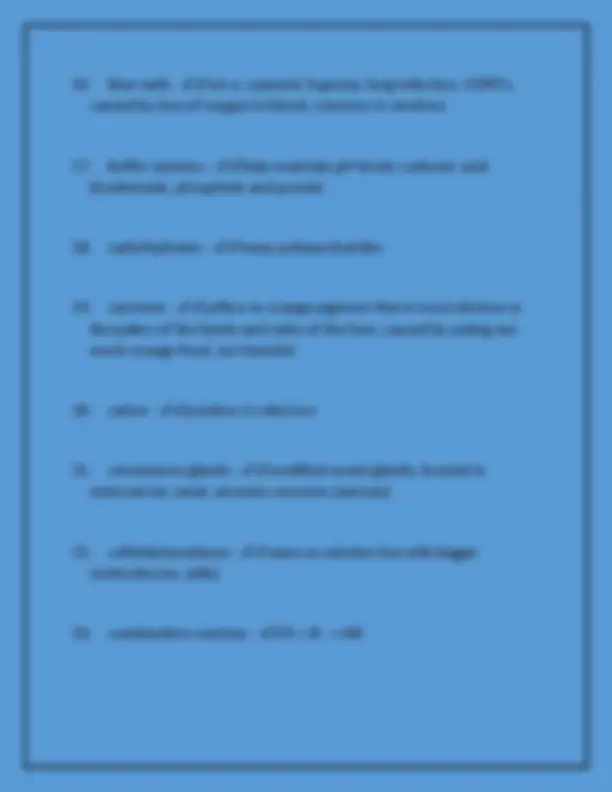
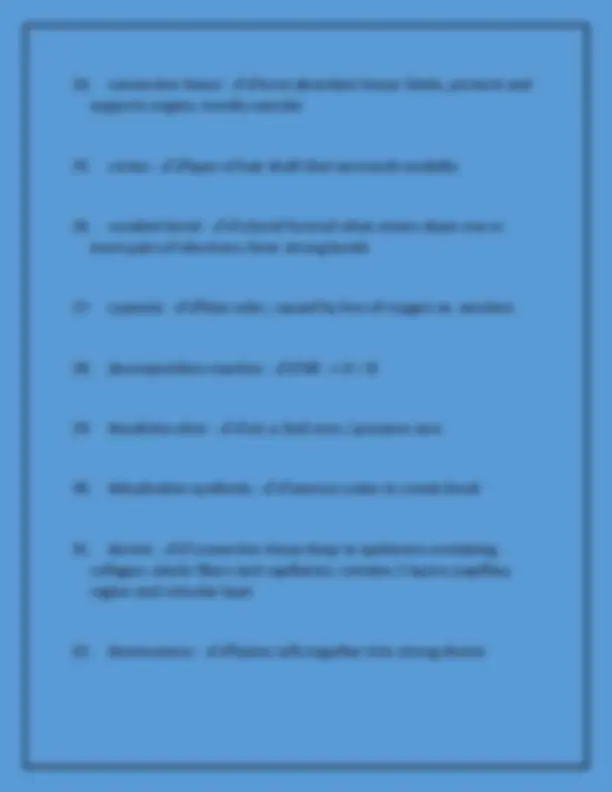
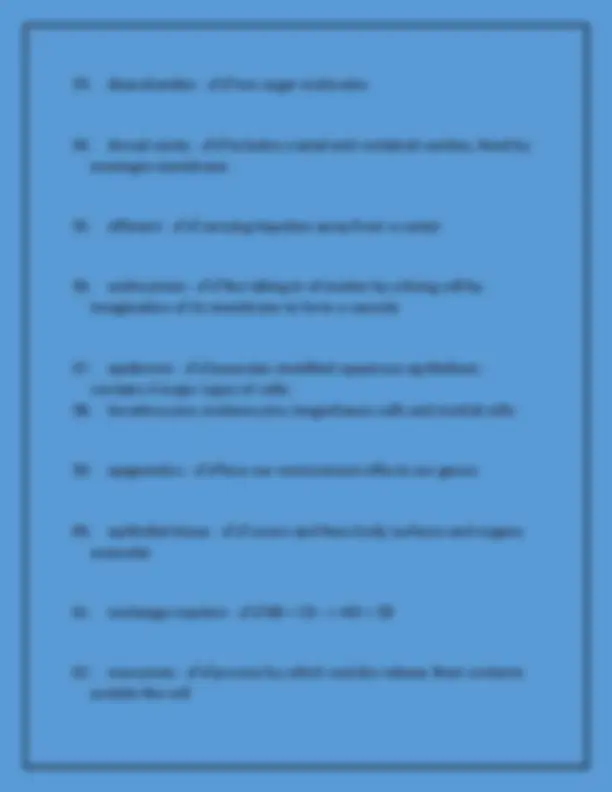
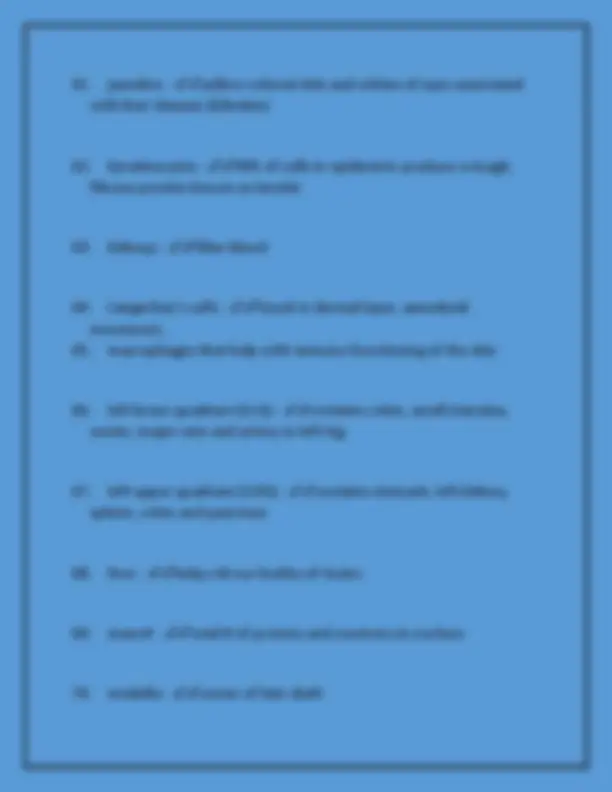
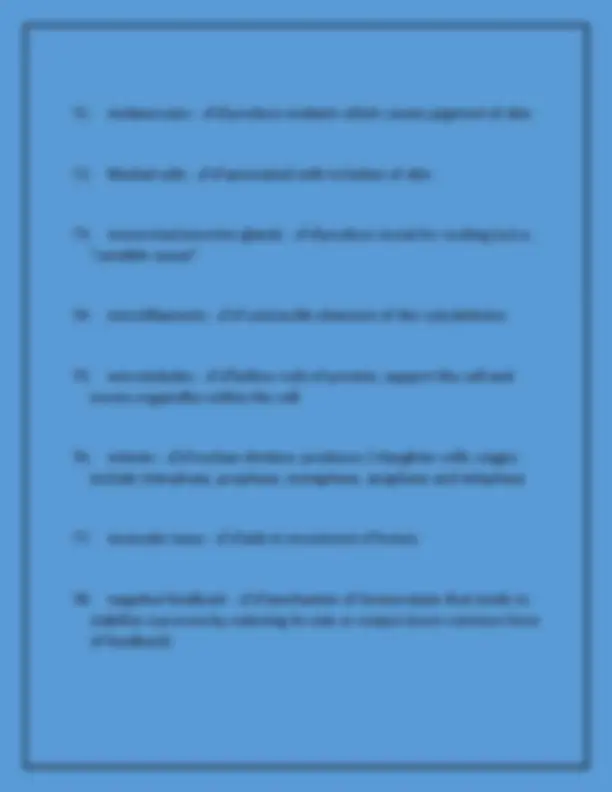
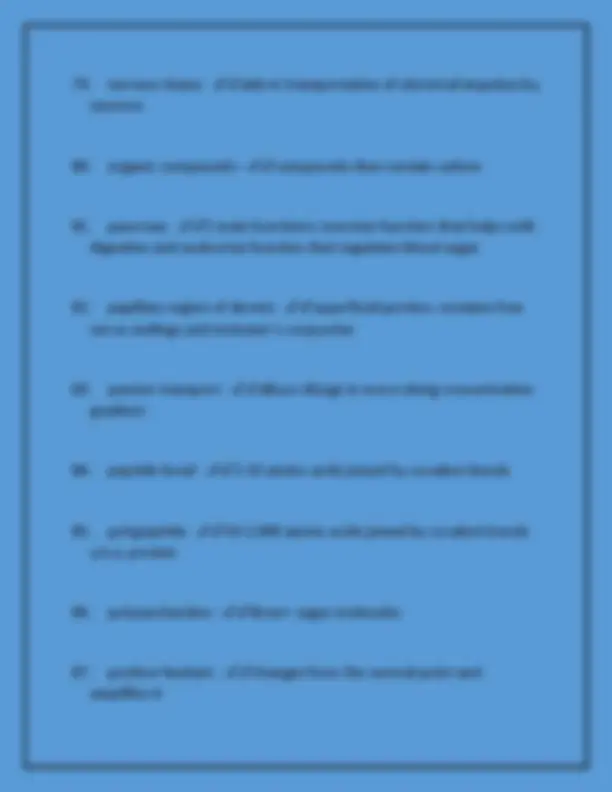
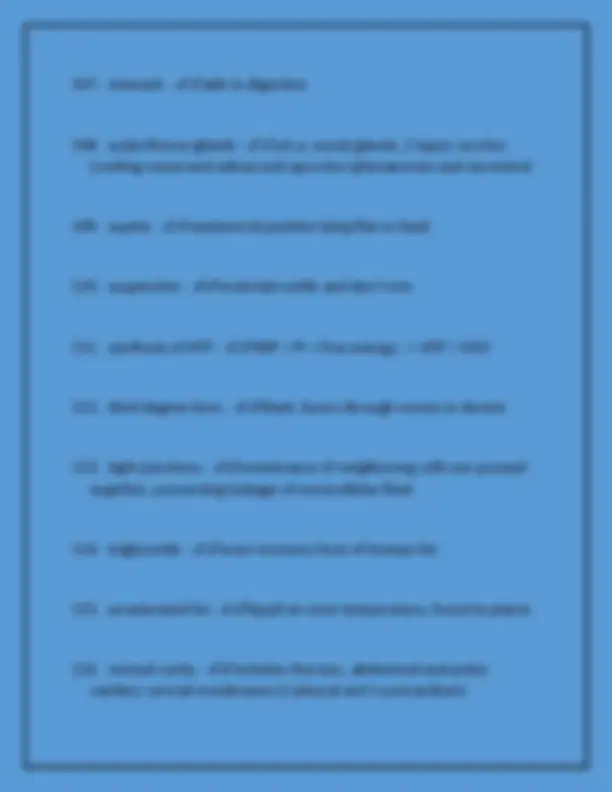
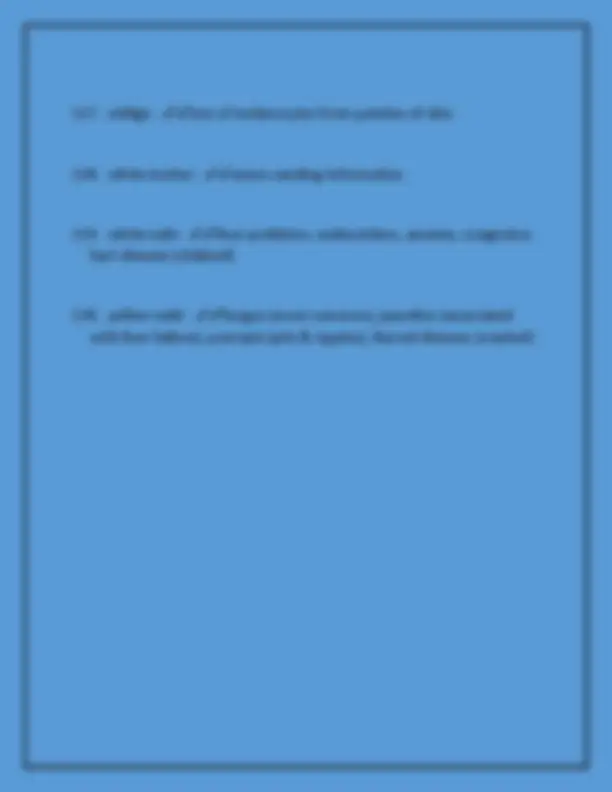


Study with the several resources on Docsity

Earn points by helping other students or get them with a premium plan


Prepare for your exams
Study with the several resources on Docsity

Earn points to download
Earn points by helping other students or get them with a premium plan
Community
Ask the community for help and clear up your study doubts
Discover the best universities in your country according to Docsity users
Free resources
Download our free guides on studying techniques, anxiety management strategies, and thesis advice from Docsity tutors
A comprehensive study guide or exam review for an anatomy and physiology 1 course, covering key topics from chapters 1-5. It includes a detailed list of 120 terms, concepts, and definitions related to various body systems, tissues, and processes. The information provided seems to be thorough and well-organized, making it a potentially valuable resource for students preparing for an exam in this subject area. A wide range of topics, including the four main tissue types, characteristics of life, functions of the skin, transport mechanisms, cellular components, organ systems, and various medical conditions and terminology. Overall, this document could be a useful study aid or reference material for university-level anatomy and physiology students.
Typology: Exams
1 / 14

This page cannot be seen from the preview
Don't miss anything!








